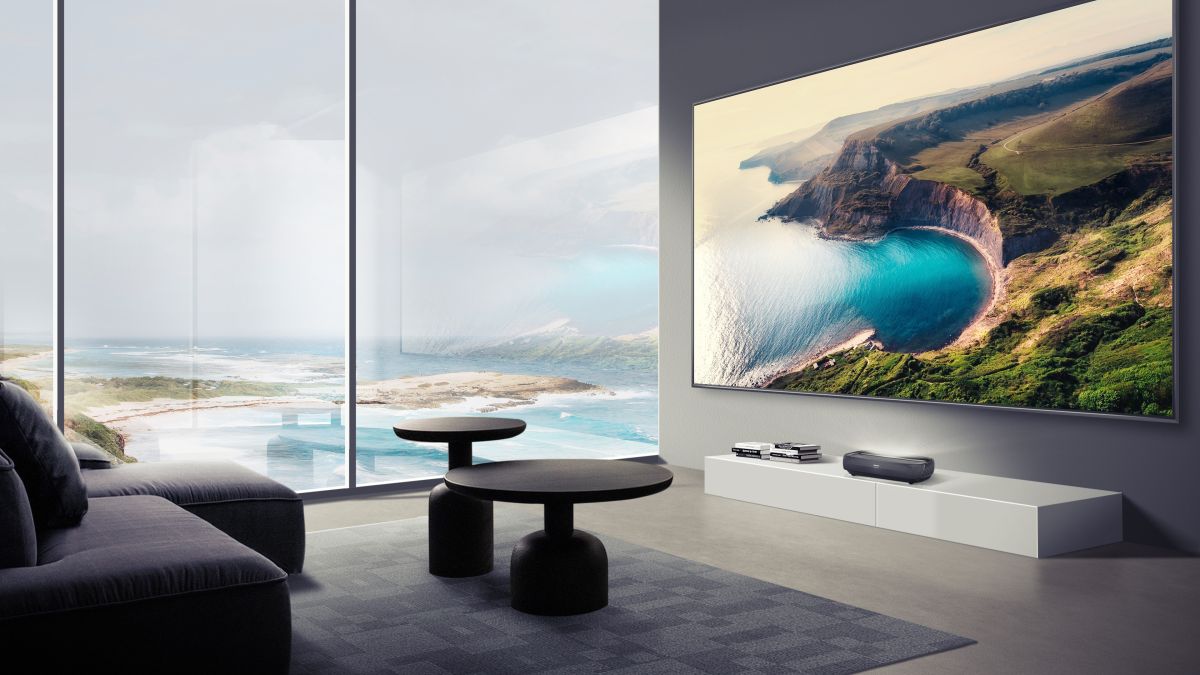Hisense Laser TV projectors now support Dolby Vision – and it’s about time
A common 4K TV feature comes to projectors

TV and projector maker Hisense announced that its flagship line of L9G Laser TV projectors have received a free Dolby Vision upgrade. The upgrade was supplied this week via an automatic firmware update, allowing L9G owners to immediately experience the benefits of Dolby Vision high dynamic range.
While Hisense isn’t the first company to announce a projector with Dolby Vision – Xiaomi has released a model with Dolby Vision compatibility, though that model is only available in China – the L9G is the first such model in the US market to provide that feature, which is commonly found in the best 4K TVs, but not in projectors.
Otherwise, the L9G is a complete A/V package consisting of a 4K ultra short throw (UST) projector and bundled ambient light-rejecting (ALR) projection screen. The projector, which sits approximately 12 inches from the wall-mounted screen, features a built-in 40-watt Dolby Atmos audio system, Android TV for streaming, and Google Assistant voice control. It’s sold with either a 100-inch screen for $5,499 (about £4000, AU$7500) or a 120-inch screen for $5,999 (about £4400, AU$8000)
Hisense calls the L9G a ‘TriChroma’ projector based on its advanced light engine that uses separate red, green, and blue lasers to beam images. Along with high brightness – the L9G delivers a specified 3,000 lumens light output – Hisense’s UST projector is said to achieve 107% of BT.2020, the recommended color space for Ultra HDTV. (Few TVs or projectors are capable of hitting anywhere near full BT.2020, which is not even supported by current streaming or disc-based video formats.)
Analysis: It’s about time projectors got Dolby Vision
Why did it take so long for Dolby Vision to arrive in projectors? Compared with regular flat-panel TVs, projectors have limited light output. The HDR10 format that 4K models do support is a basic high dynamic range variant where the movie or TV program conveys its maximum and average HDR brightness to the display (either a TV or projector) and it then accommodates that static information to the best of its capability.
Dolby Vision, on the other hand, is a dynamic HDR format where the contrast range of images are determined on a scene-by-scene or even a frame-by-frame basis. With Dolby Vision, the display (again, a TV or projector) can convey information about its maximum brightness/contrast potential to the source, and video content can then be ‘tone-mapped’ on a dynamic basis to make the most of the system’s potential.
Note that I used the word ‘system’ there. With a pre-configured projector-and-screen package like Hisense’s L9G, both the projector’s light output and the contribution of the screen to the brightness and contrast levels of images are a known quantity. This differs from most projector setups, where screens with different gain (the ratio of projected light that’s reflected back by the screen material) levels are used, or there’s no projection screen at all.
Sign up for breaking news, reviews, opinion, top tech deals, and more.
With its high brightness, TriChroma laser light engine, and bundled screen with predictable performance characteristics, Hisense’s upgraded L9G Laser TV seems to be the right candidate for launching Dolby Vision in projectors. TechRadar previously reviewed the LG9 and commented favorably on its picture quality. Maybe we’ll have to call it back in now to see how it performs with the Dolby Vision upgrade.

Al Griffin has been writing about and reviewing A/V tech since the days LaserDiscs roamed the earth, and was previously the editor of Sound & Vision magazine.
When not reviewing the latest and greatest gear or watching movies at home, he can usually be found out and about on a bike.